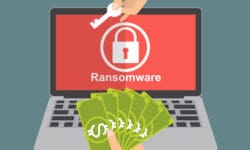The Costs of Crime and the Benefits of Security Technology, Part 1
Here’s an estimate of what your organization might spend on access control and locks, as well as the lives, resources and money you could save as a result of the installation of these technologies.
Other technologies, especially ones that prevent or mitigate crimes or safety issues, are more difficult to value. It’s very challenging to prove that a technology (or a new policy, more foot patrols or any public safety improvement for that matter) has prevented or mitigated a crisis. This poses a particular challenge for locks and access control.
For example, to help teachers lockdown their classrooms as well as provide them with peace of mind, many schools have installed locks on classroom doors that can be locked from the inside during an active shooter event. Fortunately for schools, the likelihood that a particular campus will experience a mass shooting is very small. The downside, however, is that if these locks are only to be used during an active shooter incident, they could be perceived as a poor investment because shootings happen so infrequently. This issue becomes even more pronounced if it has been several months or years since a big tragedy has taken place that has received national media exposure.
However, if the goal of the locks is also to reduce theft, vandalism and other crimes, and the campus tracks these incidents, the value of this solution is easier to see and justify. The campus just needs to compare the number of incidents before and after an installation.
With electronic access control, if the organization can realize additional benefits related to business operations and customer service, such as vending and possible revenue generated by off-campus merchants, the value of an access control solution is even more obvious. These additional functionalities could also encourage students, teachers, clinicians, administrators and other staff who possess magstripe, prox or smart cards to be more responsible with their access credentials.
“The more valuable you make the access card, the less likely people are going to share it with someone else,” says Dave Corbin, who is the director of facilities, engineering, public safety and parking at Newton- Wellesley (Mass.) Hospital. “If it’s only allowing you into parking, that’s one thing, but if it has money on it for the cafeteria, will you really trust your buddy with it?”
Anot
her important key to the success of an organization’s access and lock equipment is its integration with Crime Prevention Through Environmental Design (CPTED) and other security technologies, such as video surveillance. For example, an access control system that senses a door is being propped open could trigger a security camera, which could then be viewed in real-time by an officer in the dispatch center.
Additionally, the technology must be supported by appropriate policies, procedures and training. If it isn’t, William Nesbitt of Security Management Services International believes the hospital, school or university could increase its liability exposure.
“To misuse the technology is almost worse than not having it in the first place,” he says.
Costs Vary By Campus and System Complexity
There are many factors that determine the price tag of a lock and access control system, including costs associated with the equipment, installation, database, maintenance, policies and training. For this article, CS interviewed several hospital, school and university end users and consultants about what they paid for the various access control and lock solutions they’ve recently installed at their facilities. Not surprisingly, the costs varied greatly (see sidebar on page 4 of this article).
Some campuses choose to only use mechanical hardware, which is less expensive to install than electronic access control but more expensive to operate. According to Allegion Commercial Electronics Portfolio Leader Brad Aikin, electronic access control can cost one-and-a-half to twice (or more) to install compared to mechanical hardware. However, offline access control solutions cost about 25 percent less to operate, and real-time wireless access control solutions can cost 75 percent less to operate than mechanical hardware.
If you appreciated this article and want to receive more valuable industry content like this, click here to sign up for our FREE digital newsletters!
 Leading in Turbulent Times: Effective Campus Public Safety Leadership for the 21st Century
Leading in Turbulent Times: Effective Campus Public Safety Leadership for the 21st Century
This new webcast will discuss how campus public safety leaders can effectively incorporate Clery Act, Title IX, customer service, “helicopter” parents, emergency notification, town-gown relationships, brand management, Greek Life, student recruitment, faculty, and more into their roles and develop the necessary skills to successfully lead their departments. Register today to attend this free webcast!








